I have many stories recounting the life and times of the many Victorian family owned emporiums scattered across our town over the years. This story is just one of them.
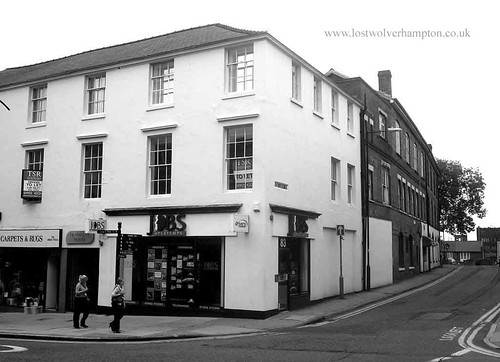
Most Wulfrunians today will recognise No 83 Darlington the Pertemps Recruitment Centre building on the corner of Red Lion Street.
I myself though and many older folk will recall it as being for many years after the War a The local branch of the Midlands Electricity Board.
Not much joy in those two enterprises to get exited about.
But if we turn the clock back 100 years or so, to a time when our town centre buildings were their most fashionable. It would have been a different story.
The question on many peoples mind then is no longer “can we fly”, but “what will be the outcome of the new discovery”.
The years approaching 1909-10 saw a series of triumphs for the great mechanical birds, Bleriot had flew across the English channel , C.S.Rolls had flew from Dover to Calais and back without descent, and this same year a Great National Flying meeting was held in Wolverhampton to herald one more advance in aviation enterprise in this country.
Even before the 1910 Flying meeting there was some interest in flying machines in Wolverhampton
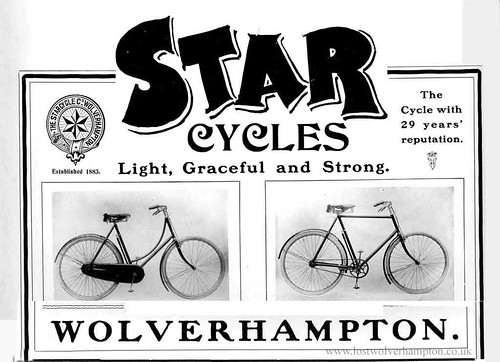
The Star Engineering of Stewart Street, manufacturers of motor vehicles and cycles, formed the Star Aeroplane Company in April 1910.
Two machines were constructed: a bi-plane and a monoplane, the former based on the Farman and later on the Antoinette, both successful French designs. As far as is known the bi-plane did not fly and the monoplane only made one hop, before Mr Edward Lisle, the Star “Boss” decided to pull the plug on aviation.

Towards the end of March 1910 the townsfolk of Wolverhampton had a chance to see a flying machine at close quarters when the Hartill mono-plane was displayed in the furniture showrooms of Robert H. Davies in Darlington Street. It drew a great deal of interest and its designer Mr Hartill, was on hand to explain all about it.
He explained to the enthralled gathering of onlookers that before starting work on the project he went over to the Rheims Flying Meeting, the worlds first, and to the Paris Aero Show of 1909. Where he made close examination of the machines present it would seem he came to the conclusion that the best design was the Santos Dumont Demoiselle, a compact and practical machine designed by Brazilian aero pioneer Alberto santos Dumont, whose fortune came from coffee plantations.
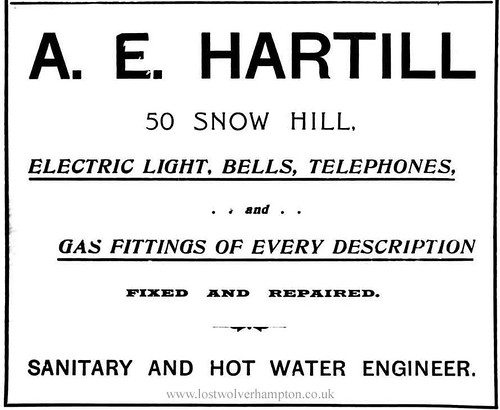
As previously mentioned, the machine was designed and constructed by Mr A.E.Hartill. a plumbing and gas engineer with premises at the top end of Cleveland Street, on the corner of Snow Hill, (as noted by his 1910 advert).
It was made to the order of a Doctor Hands, who is noted in Kelly’s 1905 directory as Surgeon and Medical Officer of Health.to the Wednesfield District Council and also medical officer and public vaccinator for for Wolverhampton Union Cottage Homes 138 Wednesfield Road.
On his return to Wolverhampton Mr Hartill began construction of the mono-plane for Doctor Hands and though it was the good doctor who was to foot the bills, the machine was to be known by the name of its designer and was to be flown by him or is son on its trials.
When completed the Hartill flying machine was seen to be very similar in layout to the Demoiselle, of very light construction, with pilot seated close to the ground under the wing and motor.
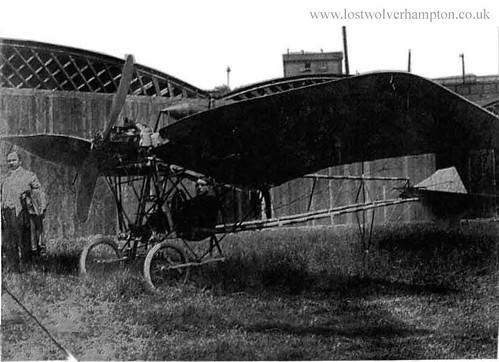
Very little is known about this machine and it is possible that the picture reproduced here is the only one taken of the mono-plane at Dunstall.
The Wolverhampton machine was however considerably larger, having a wing span of 26ft against the Demoiselle’s 18. there was also differences in the control system, for whilst wing warping was used ( a common idea of the period), the Hartill was known for having fluted wings with tips that could be drawn up, supposedly to improve stability when landing or in difficult wind conditions.
However, since since the machine did not fly, it is not possible to say if the idea would have worked .
Construction was of steel and bamboo, wing covering was rubberized aero fabric, an Alveston horizontally opposed twin cylinder engine of 20h.p. was fitted and all weight was around 4cwt.
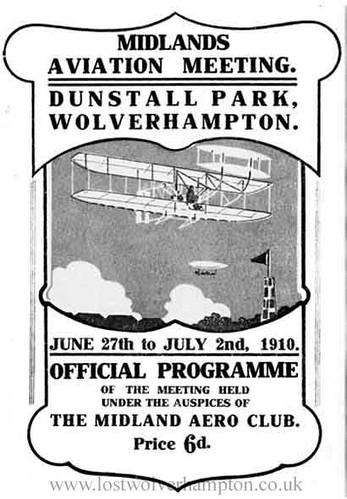
As would be expected, both Wolverhampton flying machines, the Hartill and the Star were entered for the Dunstall Flying Week held over the period June 27- July 2nd 1910, as this meeting was devised to encourage British Aviation.
It is a pity that none of these all British machines could not be persuaded to leave the ground.
One of the numerous bothers that beset the Hartill mono-plane was late delivery of the Alveston motor and a suitable airscrew.
The Doctor Hands/Hartill team tried manfully to get airborne and suffered a few frights, the mono-plane nosing over a couple of times when taxiing. It is not known what happened to this flying machine, but it seems certain it was destined not to fly.

Regarding the “Stars Entry”
A man who became well-known in the automobile and motorcycle field, Granville Bradshaw, wa responsible for the design and construction of the Star mono-plane.
As alredy stated it was based on the Antoinette, and of similar dimesions , both machines having a span of 42 feet.
However the French machine had a much larger wing area of 538 square feet compared to 290 square feet for the Star, and the Antoinette was something like 5 feet longer at 37ft 7inches and 200lbs heavier than the British machine.
The Star power plant was a 4-cylinder water-cooled 30/40hp unit ( as seen on this ad from the Aviation meeting programme). very similar to their car engine
The Star was listed to sell at less than half the £1,000 asked for the Antoinette.
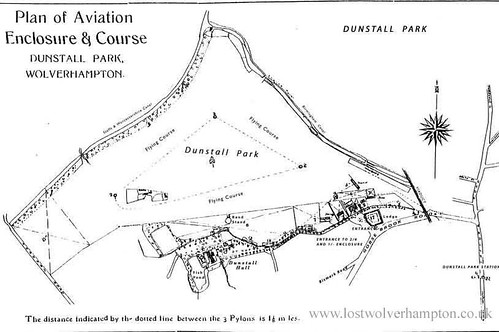
Granville Bradshaw was listed as pilot at the flying meeting, but despite much work and worry he was unable to get the machine into the air.
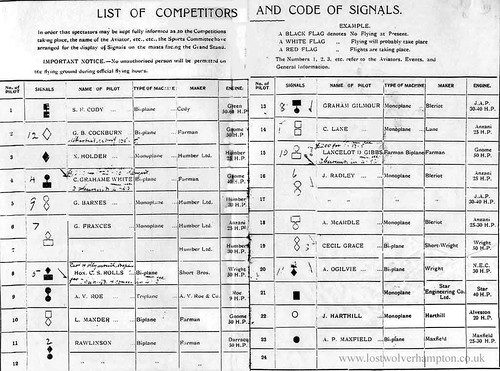
And noted on the list of competitors taken from the 1910, programme we note that the name of the Star 40H.P.Monoplane pilot No.21 is blanked out. As the stewards of the meeting ruled that he Granville Bradshaw, had insufficient experience to fly were the general public were admitted.
There are far to many interesting subjects in this programme to mention here so I will mention just two.
There was another Wolverhampton pilot at Dunstall; No. 10, Lionel Mander of the paint manufacturing family. He flew a French Farman bi-plane (with Gnome engine).
Also pictured below in this advert included in the programme we see Mr Barnes pilot No. 5 successfully flew his record breaking Humber mono-plane.

So to end with The Star;
Sometime after the Wolverhampton Flying Meeting, the Star was modified. Its wing span was reduced and more conventional controls fitted, and there is evidence that in this form the Star did make a brief flight with young Richard Lisle at the controls.
According to the late Jim Boulton, whom I will always be indebted to for sharing his vast knowledge on many subjects relating to “Lost Wolverhampton”
It is said that Dick’s flight was witnessed by his father Edward Lisle the Star ‘gaffer’ and that it so unnerved him he lost all further interest in aviation.
Billy,
I enjoyed your early flying machines of Wolverhampton Blog but in particular the fact you mentioned Granville Bradshaw. He married Violet Elsie Partridge in 1911 in Wolverhampton but divorce came in 1927. Did he in fact live in Wolverhampton at any time?
It has been said by Major Bulman the Director of Engine Production in WW2 that had the Dragonfly nine cylinder radial engine Bradshaw designed intended for use in WW1 reached production the engine would have lost the war for England. Bradshaw was awarded the OBE in 1918.
He moved into motorcycling and one of his designs was used by Panther motorcycles in a prototype design that ceased when WW2 began.
To us engine designers Granville Eastwood Bradshaw was always a thorn in our side as he designs were always clever and innovative but as it is said , invariably costly and seldom viable and almost impossible to be produced. I certainly wasted time attempting to explain to non-engineers whey Bradshaws engine proposals were impractical . His “Omega” engine was his final passion in the class of engines known as toroidal but like many other clever but impractical ideas good on paper but totally impractical.
A biography has been written by Barry Jones “Granville Bradshaw; a flawed genius? “.
John